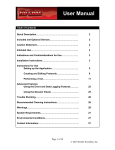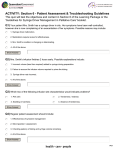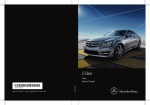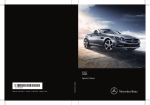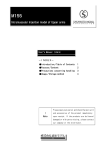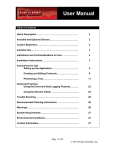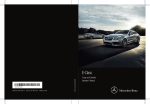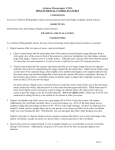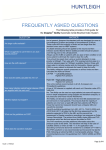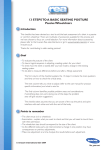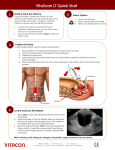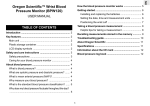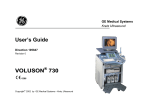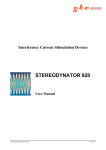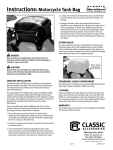Download RADAR™
Transcript
RADAR ™ EASYCLIK™ MODEL 4180 Vascular Compression Device User Manual www.compressar.com RADAR™ User Manual The single-use RadAR EasyClik Vascular Compression Device is indicated for use by medical professionals to promote hemostasis at a puncture site into a blood vessel in a patient’s arm, following a cannulation procedure. CAUTION: The RadAR EasyClik Vascular Compression Device must be applied by a physician, nurse or technician experienced with vascular procedures. The patient must be checked regularly for bleeding, hematoma or thrombosis while the EasyClik is in use. EasyClik should be used only for hemostasis of a puncture site on a patient’s arm. Sterile or aseptic technique should be used. DO NOT LEAVE THE PATIENT UNATTENDED WHILE HEMOSTASIS IS BEING ACHIEVED. • Sterility of package contents is not guaranteed if the individual packages are previously damaged or opened. Only new, sterile EasyClik devices taken from factory-sealed pouches should be used. • Do not re-use or re-sterilize the EasyClik devices. • Do not use alcohol, disinfectants, or any other liquids with EasyClik or on the patient while the EasyClik is being applied. EasyClik must be deployed onto a dry site. • Federal (USA) law restricts this device to sale by or on the order of a physician. • Use caution when applying compression with EasyClik, taking care not to overtighten it on the patient’s wrist. • Use caution if deploying EasyClik onto a patient with uncontrolled hypertension or systolic pressure of more than 180mmHg. • Instruct the patient not to touch or bump the EasyClik during compression. • Monitor the patient during the compression period to ensure proper deployment and patent distal radial artery blood flow. housing levers floating pad compression pad strap INSTRUCTIONS FOR USE Clinicians should always follow institutional protocols for post-procedure hemostasis when deploying the EasyClik device. Positioning EasyClik 1 Use sterile or aseptic technique to remove EasyClik from the pouch. Ensure that the puncture site and area is dry. Place the strap around the patient’s arm, with the levers facing laterally, i.e. towards the radial side of the wrist. At the user’s option, a dry sterile gauze pad may be placed between the clear compression pad and the patient’s skin. 2 Thread and pull the strap tip through the housing. Position the compression pad over the puncture site. Move the beige floating cushion pad along the strap so that it is placed over the ulna. The sheath should seat under the groove on the bottom of the compression pad. The front (distal) bleed hole of the compression pad should be positioned over the puncture site area. The strap should be snug around the patient’s wrist but occlusive pressure should not be applied before removing the sheath. Removing the Sheath 3 Place your thumb over the compression pad and begin pulling the sheath with your opposite hand. Gently increase the pressure over the compression pad with your thumb as the sheath is removed so there is no bleeding. Firmly apply occlusive compression by pressing down with your thumb once the sheath is completely removed from the puncture site. 4 While pressing down firmly on the compression pad, tighten the strap by pulling it through the housing so that there is no bleeding from the puncture site. You may then remove your thumb from the compression pad. There should be minimal or no palpable distal radial pulse. Adjusting Compression 5 It is strongly recommended that immediately after tightening to occlusive compression, an initial adjustment be made to permit distal blood flow through the radial artery. While palpating the radial artery immediately distal to the compression pad, use the levers to release compression in small increments. Use caution to only lift one lever at a time, one after the other, to gradually release the compression. At lower compression, push the strap through the housing in the medial direction while lifting a lever. To increase compression, pull the strap through the housing in the lateral direction. 6 Wipe away any blood from the puncture area and ensure there is no bleeding or oozing from the site. Ensure that there is a distal radial pulse and that EasyClik is firmly secured around the patient’s wrist. The strap may be tucked through the slot of the beige floating cushion pad to keep it out of the way. Use caution to keep the compression pad over the puncture site while tucking in the strap. NOTE: When the strap is tucked in, compression cannot be released by only lifting the levers—you must also push the strap through the housing unless the strap is removed from the beige floating cushion pad. 7 As per your institutional protocol, gradually release compression to increase distal blood flow to ensure patency in the radial artery. You may make periodic compression adjustments by lifting a lever. If bleeding or oozing occurs while compression is released, pull the strap in the lateral direction through the housing to tighten and ensure that radial artery patency is achieved. When evaluating the artery patency, occlude the ulnar artery to validate distal radial flow. Removing RadAR 8 9 Once hemostasis has been achieved slowly release compression completely, then prepare to remove EasyClik. Remove the tip of the strap from the beige floating pad and alternately lift the levers until compression is released and the strap is loose enough to pull over the patient’s hand. If needed, gently palpate around the compression pad to separate it from the patient’s skin. Then, lift up both levers and push the strap out of the housing. Observe the site for any oozing or rebleeds and recompress if any occur. Discard the device per your institutional protocol. EasyClik may also be deployed in conjunction with the mBrace Model 4200 or Model 4250 Wrist Support. This stabilizes the wrist and helps avoid hand movement during the hemostasis period. Cautions The RadAR EasyClik Vascular Compression Device device contains no user-repairable parts. Contact your Advanced Vascular Dynamics representative for service and support. The EasyClik device, including its packaging, is not manufactured with natural rubber latex. STERILE EO Sterile symbol. This indicates that the RadAR EasyClik is sterilized using ethylene oxide. No re-use symbol. This indicates that the RadAR EasyClik is for single use only and is not intended to be re-used. Instruction symbol. This indicates that you must read the accompanying instructions. RADAR™ EASYCLIK™ LIMITED WARRANTY The Advanced Vascular Dynamics RadAR EasyClik Vascular Compression Devices are warranted against defective material and workmanship for one year following delivery of the product to the original purchaser. If any Device or part thereof, in the judgment of Advanced Vascular Dynamics (AVD), is proven to be defective in material or workmanship during the limited warranty period, such defects will be repaired or component or product replaced (at AVD’s option) free of charge for parts or labor. Any replacement part may be new or refurbished and like-new parts. This limited warranty shall not apply to any product which has not been used in accordance with the manual, been misused, abused, altered or repaired by anyone other than AVD or its authorized representatives. This limited warranty does not cover EasyClik Devices which have been reprocessed or re-used in any way. Use of anything other than new EasyClik Devices in previously unopened factory sterile packaging immediately and permanently voids all warranties and AVD shall not be liable to any person for any indirect or direct consequential damages resulting from or caused by any defect, failure, or malfunction of such Devices or any component thereof. This limited warranty is in lieu of, and AVD specifically disclaims, all other warranties, express or implied, including any implied warranty of merchantability or fitness for a particular purpose, and AVD shall in no event be liable to any person for indirect, direct, incidental, special or consequential damages of any kind or character. No person is authorized to assume for AVD any other liability in connection with the sale of this EasyClik Device or its components. Some states or countries do not allow the exclusion or limitation of incidental or consequential damages or allow limitations on how long a limited warranty lasts, so the above limitations or exclusions may not apply to you. This limited warranty gives you specific legal rights, and you may also have other rights that vary from state to state or country to country. To obtain factory service, contact AVD request a Returned Goods Authorization, shipping instructions, and the ship-to address. The RadAR EasyClik is to be shipped, freight pre-paid. In-warranty products will be returned to the sender, postage pre-paid. Advanced Vascular Dynamics Ph) +1-503-223-2333 Fax) +1-503-223-8585 Toll-Free USA) 1-800-525-2555 [email protected] www.compressar.com EC REP BISPING Medizintechnik GmbH Reutershagweg 2, 52074 Aachen, Germany Ph) +49-241-173518 Fax) +49-241-175627 [email protected] www.bispingmed.de Advanced Vascular Dynamics 4252 SE International Way, Suite F Milwaukie, Oregon 97222 USA Ph) +1-503-223-2333 Fax) +1-503-223-8585 www.compressar.com Semler Technologies, Inc 0470 RADAR ™ EASYCLIK™ Advanced Vascular Dynamics®, AVD™, the logos, RadAR™, EasyClik™, and Semler Technologies are trademarks or registered trademarks of Semler Technologies, Inc. RadAR EasyClik User Manual. Manual number 061-4180-00 rev. A September, 2013 Order RadAR EasyClik using part #140-0180-00. RadAR EasyClik devices are made in the USA. Patents pending. Copyright © 2013 Semler Technologies, Inc. All rights reserved








